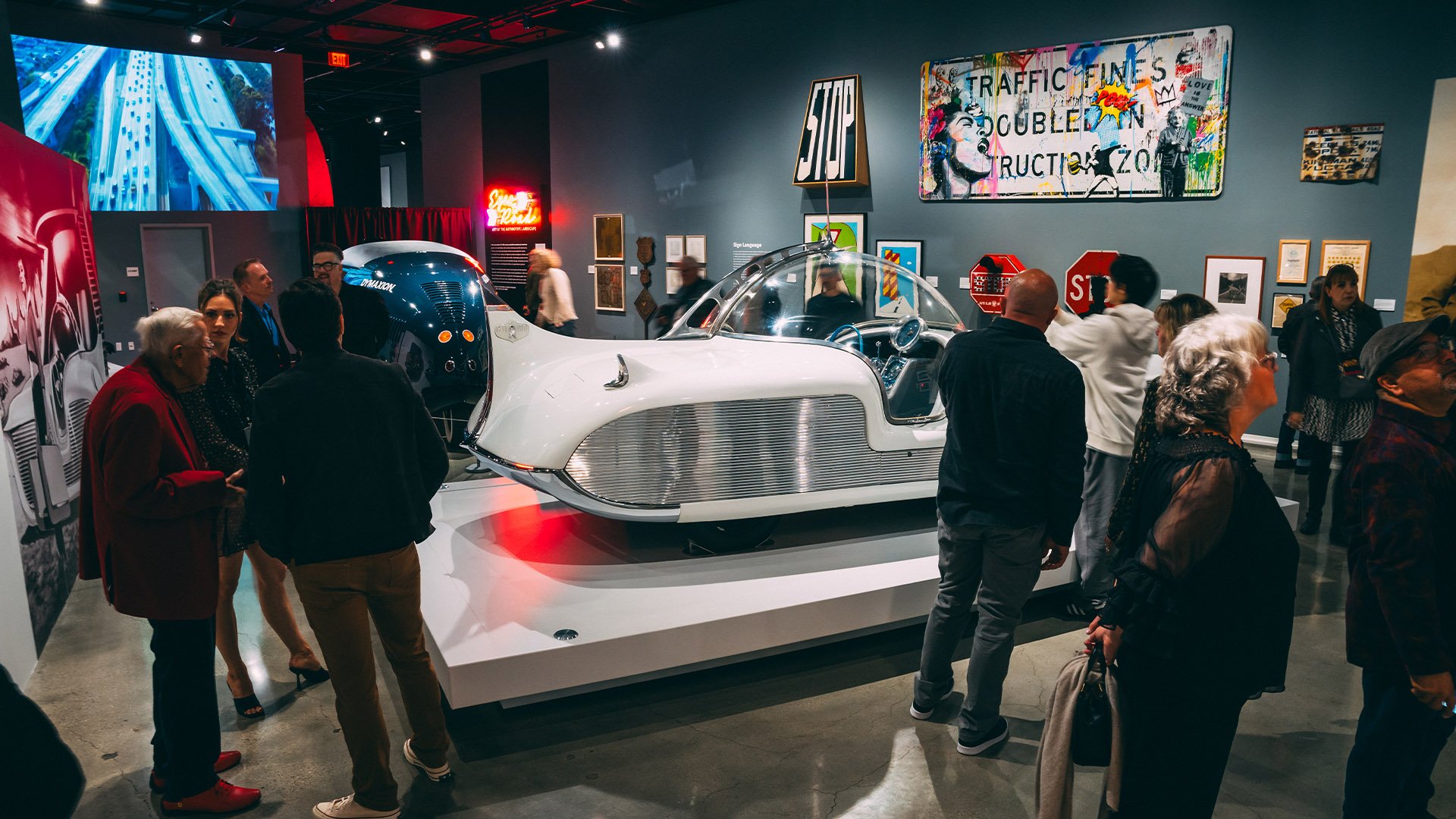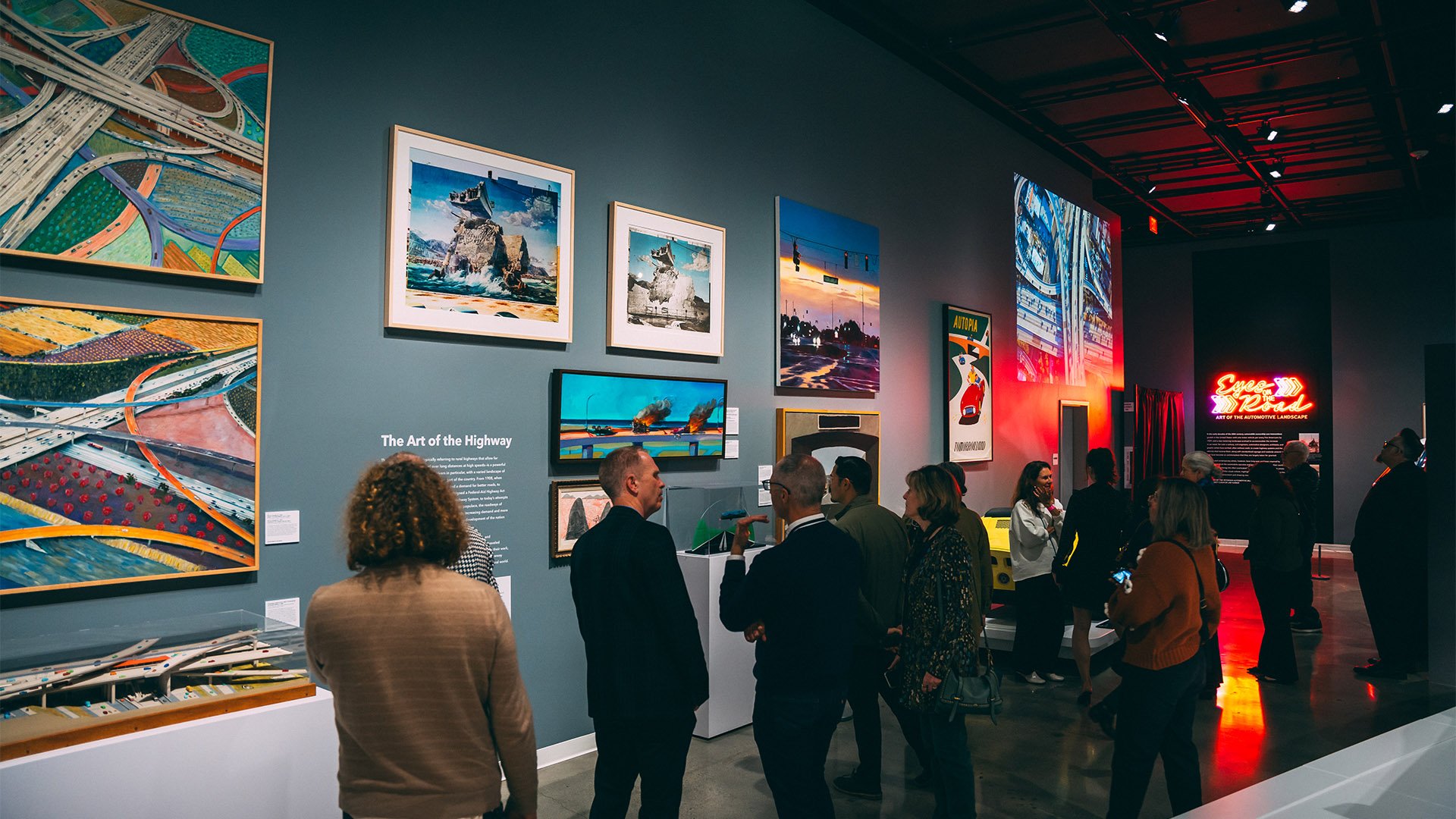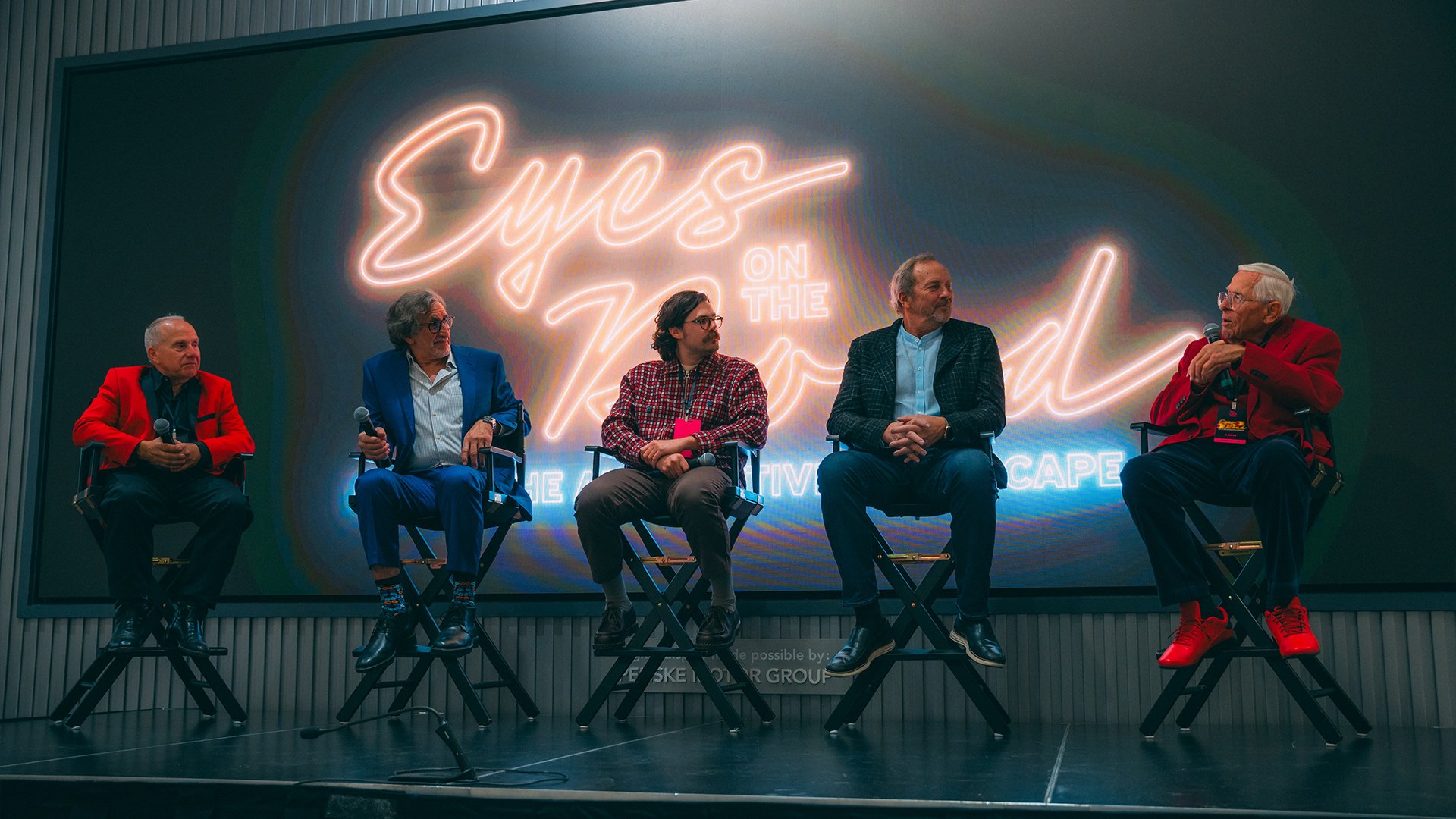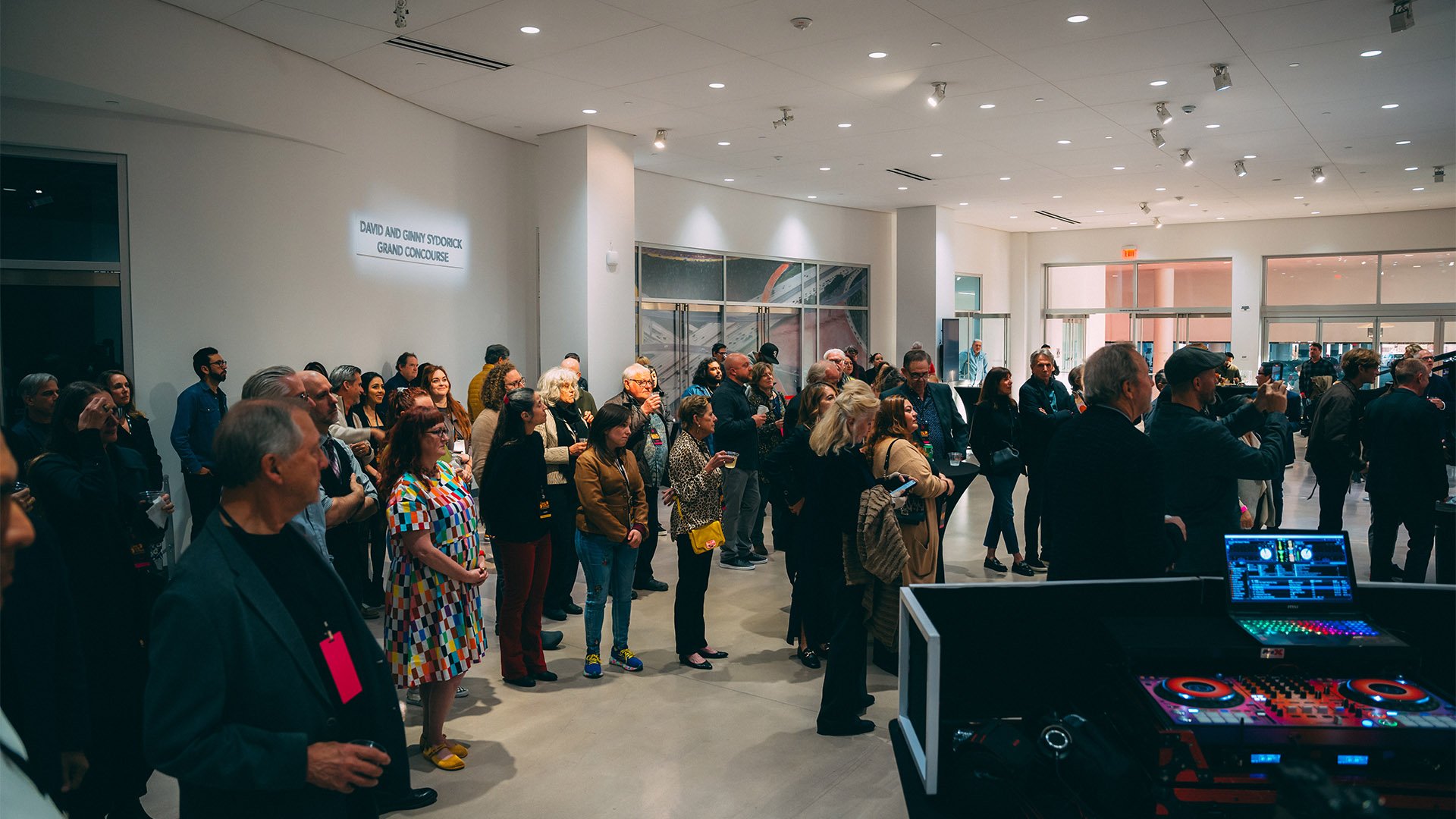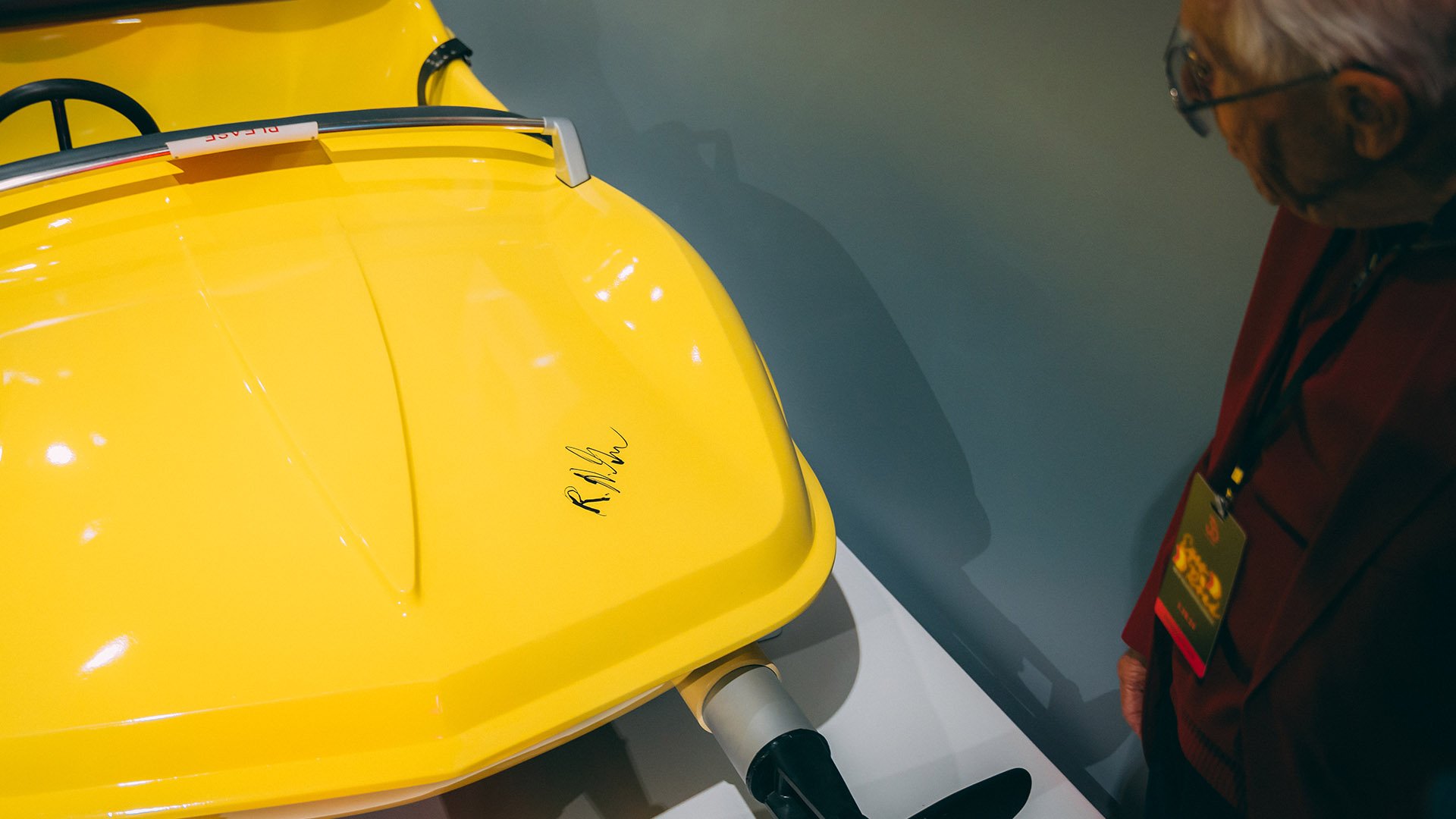Eyes on the Road Exhibit Opening | Event Recap
Eyes On the Road
Thank you to all of our attendees who joined us for this exhibit opening event. Bob Gurr, Harry B. Chandler, Larry Yust, Jeffrey Sincich, and other contributors to the exhibition made an appearance as well, and we were glad to see the community engagement for this event. Like all exhibitions presented by the Petersen, this installation is the fruit of many labors, and we’re excited to show what the road has come to represent in the more than a century since the invention of the automobile.
Learn more about the Eyes on the Road exhibit in this article and on our main exhibit page!
Eyes On The Road: Sign Language
The first part of our exhibit explores the artistry behind signage. A considerable amount of creativity, design, and care was put into creating the road signs we have today. We take for granted their current simplistic interpretation as we see it while driving, and often the ingenuity of their rather complicated designs is missed. Signage such as the painted “stop ahead,” interpreted in Jeffery Sincinch’s work “Stop,” uses unique distortion to convey its message.
Julius Shulman, [Mobil Gas Station, Anaheim, CA], 1956. © J. Paul Getty Trust. Getty Research Institute, Los Angeles (2004.R.10)
Julius Shulman, [Mobil Gas Station, Anaheim, CA], 1956. © J. Paul Getty Trust. Getty Research Institute, Los Angeles (2004.R.10)
Eyes On The Road: At The Pump
Another key aspect of the automotive landscape is the gas station, and the design choices that are made to attract attention to passing motorists. These include vivid colors and attractive logos. Of architectural note, there was a wide-scale implementation of very tall and bright signs designed to be clearly visible from the freeway. Especially after World War II, in difficult job circumstances, many men traveled the country looking for work, and some were commissioned to create hand-painted colorful signage.
Gas stations were essential in cementing the combustion engine as the primary propulsion method of choice; prior to its inception, one would buy gasoline over the counter at the store, and charging electric vehicles served as the alternative. For better or worse, once the convenience factor of the gas station came about, electric vehicles would take a backseat in the era of gas dominance that followed.
Pictured above: works by Larry Yust (b. 1930) “Street Art, 3rd Street” & “Western Ave HK Super”, Steve O’Loughlin (b. 1958): “Freeway Box”, painted electric box commissioned by the Petersen for this exhibit.
Eyes On The Road: Graffiti
Graffiti and street art have become an integral part of the automotive landscape, giving rise to notable artists such as Mr. Brainwash and Banksy. Often associated with rebellion, graffiti art has become more accepted, to the point where talented artists are commissioned to decorate buildings or other surfaces with their artwork. Though traditionally shunned, graffiti can be used to express a sentiment that is unique to the medium, able to use the built environment as a means to create impactful imagery.
Pictured above: Allan D’Arcangelo (1930-1998), Day and Night, 1970, Mixed media on acrylic, glass, silkscreen, and metal
Eyes On The Road: The Highway
The highway has been a transformative part of American culture, including shaping our way of thinking about transportation, as well as being responsible for the literal transformation of our landscape. From its inception in the 1940s, then being officially supported by the Federal Aid Highway Act of 1956, it inspired many to travel and explore the United States. Likewise, it also inspired artists such as Harry B. Chandler (artwork pictured above, aerial art of freeway interchanges) to create artworks representing what they saw in the architecture and design of the freeway.
Eyes On The Road: Opening Night
Thank you to those who joined us on this opening night, and for checking out this recap on the event and exhibit. There’s more included in the exhibit that wasn’t covered here, including stories, cars, and trends that would result in defining major parts of the automobile industry. When you visit the Petersen Automotive Museum, we encourage checking out the Eyes On The Road: Art of the Automotive Landscape exhibit to see and enjoy many more artworks that were inspired by the road.
Learn more about the Eyes on the Road exhibit on our main exhibit page!


